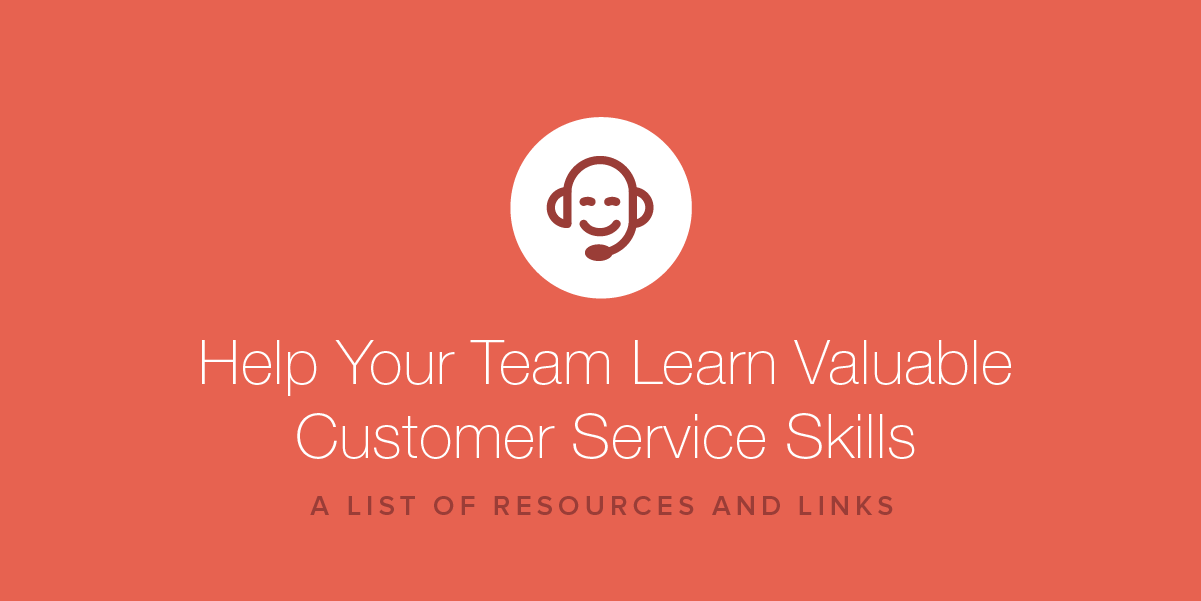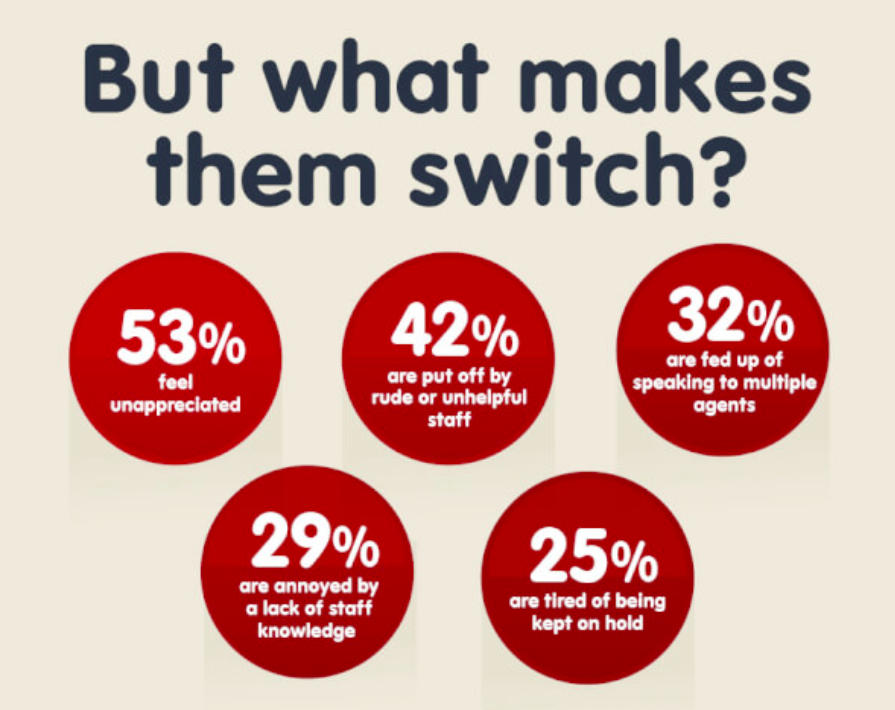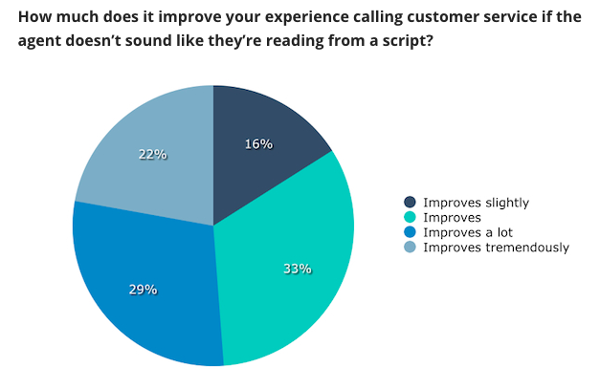A List of Resources for Learning Valuable Customer Service Skills
- July 4, 2018
- By: Vonigo
When you operate a mobile service business, your reputation for customer service can be a major differentiator. Your team has to be experts in the actual technical work that you do, but it also helps if they are trained to be excellent at customer service.
Why Great Customer Service Matters
Customer service, whether good or bad, can make or break a company. Especially in competitive, price-sensitive industries, having a reputation for great customer service can have a massive effect on your ability to gain market share.
Don’t take our word for it though; trust the data. According to a research report by NewVoiceMedia (and presented in this handy infographic), an estimated $41B is lost by US companies each year due to poor customer service. And 76% of consumers surveyed say they think the quality of customer service is the true test of how much a company values them.
We’ve prepared a comprehensive list of key customer service skills, and resources you can use to learn them or to help teach your team.
Start with a Script (Template)
There are many schools of thought on the use of customer service scripts (every customer interaction is different). Some suggest specific, detailed scripts. Other say to keep it more loose and conversational. Having a consistent approach can be extremely helpful. Establishing a set of policies and protocols to handle all customer interactions will save you plenty of time and confusion. It will also help empower your front line team to make decisions on how to deal with customer questions and concerns.
If your team is clear on your policies and is empowered to deal with them, they can handle a lot of issues on their own, without escalating things further. Confusion among your ranks reflects poorly and can cost customers time, which will damage their perception of the quality of your service.
Customer Service Script Resources
Hubspot has published a list of do’s and don’ts of positive scripting for customer service.
When the interaction turns into more of a challenge, refer to Helpscout’s article on how to handle 8 challenging customer service scenarios.
Should you follow the script at all costs? Jeff Bezos, CEO of Amazon, says no. LiveChat’s article says to use scripts as a guideline, but to leave room for real conversation (and emotions) to occur.
Smile!
It sounds so cliche, but a smile is a very powerful thing. Even on the telephone, the presence of a smile can be felt, if not heard. “A smile—or the nonvisual sense of a smile for telephone customer service representatives—can be the most significant part of a business transaction,” says Kaan Turnali in this article for Forbes.
LivePerson lists 8 ways to make your customers smile. “A customer will often reflect a customer care professional’s friendly and measured tone and exit the conversation with a more positive outlook.” Customers want to do business with brands that leave them happy and satisfied, with a smile on their faces.
On Zendesk’s list of 16 customer service skills, smiling tops the list. They caution you to make sure a smile is happening at the right times though, and that they are authentic. “Smile as you would in a face-to-face conversation.” We haven’t listed any specific resources to help you learn how to smile—hopefully, you’ve already got a good handle on that skill.
Learn to Empathize
Understanding your customer’s needs and desires, in other words, to show empathy, is an extremely important customer service skill. The goal is to help them feel valued. After all, it won’t be your internal customer service metrics that earn you a good reputation; it will be how you actually make your customers feel. There is any number of ways you can communicate that you can begin to empathize with your customer, including:
- Acknowledge how long they’ve been a customer with you
- Tell them sincerely how much their loyalty means to you
- Thank them for being patient if things take longer than they should
- Indicate that you understand their point of you, and you would feel the same “in their shoes”
And then there’s the best thing that any customer can hear: when you tell them they’re right. Comm100 has published a list of 30 empathy statements that you can use to help customers understand that you’re on their side. When in doubt, as questions.
Listening Skills are Paramount
Asking questions is just the beginning. The real key is to actually listen to a customer’s responses. This is the point where your scripts become merely templates, and the actual concerns of the customer take center stage.
Listening makes both sides of a conversation feel better. More importantly, listening can help lead to a resolution faster. Often, the customer will tell you exactly what they want, and it might be easiest just to listen and say yes.
When a breakdown in communication happens, listening intently can help you that holy grail of customer service, the service recovery. When you can turn a dissatisfied customer into a happy one with a resolution they suggested themselves, everybody wins.
Understanding Tone, Especially in Text
When you communicate in person or even over the phone, it’s easy to decipher tone. You can use non-verbal cues like body language when you’re in person, and it’s easy to tell from someone’s voice what their attitude or meaning is. In written text, it’s much more difficult.
If you leave it up to a customer to determine what the tone of your written responses is, they will rarely fill in the blanks with positivity. You have a number of tools at your disposal to communicate tone though. Word choice, punctuation, sentence length, and yes even emoji can help add tone to your messages.
WriteExpress offers 10 tips for using an appropriate tone in business writing. When it comes to crafting your customer service script templates, taking care to understand the way a customer can interpret your tone is a worthwhile investment.
Know When to Respond, and Decide Quickly
Timing is everything. When a customer contacts you, they want a resolution in a timely manner. Whether it’s to request a quote, to confirm a booking, to resolve a dispute, or even just to answer a question, the sooner you reply, the more customer will appreciate it.
Responding quickly can mean the difference between converting a customer or losing them to your competition, too. If a customer has contacted you for a quote, for example, they might have reached out to several companies. The one with the quickest and most satisfactory response is the one most likely to win the business. Customers might even choose the higher priced option when the additional cost can be justified by better and more timely service.
There are exceptions, though. Especially on social media, sometimes a question or critique can be little more than an adversarial attempt to cause a row. In internet speak, this is referred to as trolling. When there’s no hope for constructive discourse, know when to walk away. If it’s a comment on your website, Facebook Page or Instagram, you delete it or hide it.
Master Your Product Knowledge
Your customer service team is only as good as their product knowledge. This is true for several reasons. For one, the more they know the more they sound informed and can be truly helpful to a customer’s needs.
Secondly, the more they know about your products and services, the better they can be at selling them. Whether it’s an add-on service, service upsells, or a recurring appointment, the more your agents know, the better they can present the right options.
The best way to increase your customer service team’s product knowledge is to have them experience your products and services first hand. Consider sending office workers out on calls with your field team as part of their initial training. Seeing the work firsthand will give them a more intimate understanding of your services. This can be helpful in a number of ways:
- The can speak about the services with more authority
- They can better understand the processes and make better recommendations
- They can more accurately quote on the potential costs of jobs, using their first-hand experience
Ask for Feedback
Good customer service doesn’t end when the transaction is over. After all, the goal is to get the repeat business. Not all customers, but some, will be happy to provide feedback on their experiences with you. In those cases, it helps to strengthen the relationship to know that their feedback has been heard, good or bad.
You can also use that feedback to identify your strengths and weaknesses. If you discover that your business has a particular strength, you can place more focus on it. Same goes for if you have an area that a customer has identified that you can work on. If you fix problems as they arise, your overall customer approval rating will go up over the long term.
When you receive positive feedback, ask customers for reviews, testimonials, and case studies. This can help you generate reviews on multiple review sites, and also help you create customer stories that you can use on your website.
Measure Your Performance
Not only can you collect anecdotal feedback from individual customers, but you can also track your overall performance. Using tools like NPS (net promoter score) surveys or customer support tools like GetSatisfaction, you can monitor your customer service “score.” If you want to learn more about NPS, our article that talks about what NPS is, and how you can monitor and improve it.
It’s a great way to take the temperature of the way customers rate your customer service and will give you an idea whether things are improving, declining, or remaining steady.
With customer service tools like Zendesk or GetSatisfaction, you can also track the performance of each team member, so you can identify your best performers, and the ones who can benefit from more training. As GrooveHQ points out, there are many things you can measure:
- Total number of customer service requests
- Number of incomplete requests
- Number of requests that become bookings
- Time to complete a request or quote
- Customer success rate
- NPS (net promoter score)
- Number of messages per request
Make it a Long-Term Priority
If you are constantly looking to improve your customer service, and measuring your performance, you can set long-term goals that will shape the future of the company. For example, let’s say you want to be the top-rated moving company on Yelp for your city. You would not only focus on providing great service from the first interaction through to the post-move follow-up. But you can also encourage online reviews, set training times to help strengthen your areas for improvement, and identify ways to go the extra mile and improve your reputation over time.

Set long-term goals, measure them appropriately and regularly and work to achieve them. If you do, you will earn a better reputation with your customers. This will pay dividends in the form of positive reviews, and an increase in referrals and bookings.
Keep your team up to date on your progress and performance. Your entire team will have an opportunity to “buy in” to your vision. Their performance will ride to meet the standards you set.
The entire team can feel a sense of achievement when you achieve your goals.
Increase Your Bookings and Save Time With the Right Service Business Tools
Interested in learning more about how you can use software specifically designed for mobile businesses to help you grow your business? Book a free, private demo of Vonigo.







